
30 Years Since Chernobyl: How 3,000 Children Were Airlifted Out of Nuclear Disaster
by Dovid Margolin – Chabad.org
Four years had passed since reactor No. 4 at the Chernobyl nuclear plant in Soviet Ukraine exploded in the early morning hours of April 26, 1986, shooting radioactive particles high into the atmosphere and causing the worst nuclear disaster in history. By the summer of 1990, the area in the immediate perimeter of the plant had long been evacuated, but millions continued living in surrounding villages and cities where nuclear fallout had rained down and embedded itself into the soil. Communities were seeing a surge of reported cancer cases, particularly thyroid cancer and leukemia—sicknesses that could be directly linked to radiation exposure.
That summer, Tzeirei Agudas Chabad (or Tzach, as it’s more commonly known), a Chabad-Lubavitch umbrella organization in Israel, heard reports of illnesses sweeping through the historically heavily Jewish region. Chabad officials in Israel contacted theRebbe—Rabbi Menachem M. Schneerson, of righteous memory—in New York. What, they asked him, was the organization’s responsibility in this situation?
The Rebbe’s response was swift and definitive, setting in motion an effort that would become the largest-ever rescue mission of children affected by the Chernobyl accident. In the three decades since the meltdown, more than 3,000 children have been saved through the project that came to be known as Chabad’s Children of Chernobyl, the only program that permanently resettled kids from the area.
In effect, the Rebbe’s reply was: “Children are becoming sick. We don’t have time to collect research and see what the long-term effects of exposure would be,” recalls Abi Raichik, who played a key part in establishing the project’s American office. “He said: You must do everything to rescue them.”
“Later, they started calling the resulting illnesses ‘Chernobyl AIDS,’ ” says Raichik. “The Rebbe responded to it before the problems had a name.”
On Aug. 4, 1990, shortly after the Rebbe’s response, the first airplane carrying 196 Jewish children from Belarus landed at Ben-Gurion International Airport in Israel.
It would be the first of 100 rescue missions run by the group.
The Scope of the Emergency
Only two months before the devastating meltdown, in February 1986, Soviet officials had bragged about the safety of the Chernobyl reactor. Vitali Sklyarov, minister of power and electrification of the Ukrainian Soviet Socialist Republic, told Soviet Life magazine that “the odds of a meltdown are one in 10,000 years. The plants have safe and reliable controls that are protected from any breakdown with three safety lines.”
It was during plant testing at the end of April that controls at reactor No. 4 malfunctioned; pressure from excess steam caused the first of a series of explosions. The Communist government reacted in the only way it knew how: by lying. And so, even as firefighters on suicide missions battled the nuclear-fueled flames—the largest plumes of which were sending radioactive particles straight into the atmosphere—Moscow remained silent.
As far as the Soviet public knew, the event shaping up to be a nuclear nightmare had not occurred.
It took 36 hours after the initial explosion for authorities to send in 1,000 buses to secretly evacuate civilians living in Pripyat, a town immediately adjacent to the Chernobyl plant and where many had taken ill within hours of the accident. Residents were told to pack lightly, that they would only be gone for three days. They never returned. The city stands abandoned to this day, as does a 1,000-square-mile region around the plant known as the Chernobyl Exclusion Zone. As for the hundreds of thousands living in the vast swaths of Ukraine, Belarus and Russia where fallout had landed—radioactive material spread even further than that, reaching as far as West Germany and Scandinavia—they were told not to worry.
According to authorities, the accident, which the Communist government eventually admitted had indeed taken place, wasn’t that bad.
But it was that bad, and worse. Galina Goldberg, 36 (who was 6 at the time), lived in the small city of Mozyr in Soviet Belarus, 62 miles northwest of Chernobyl. She still grows emotional recalling the events of the following days, months and years—memories that have colored much of her life. Both her mother and grandmother worked as operators in the Soviet communications network and were part of the team relaying emergency messages sent between military officials in Chernobyl and Moscow. They knew the scope of the emergency immediately. Goldberg remembers her mother working three 24-hour shifts in a row.
“My uncle worked as a bus driver,” says Goldberg, today a Russian-language journalist and filmmaker living in New York. “She called asked him to take us children to an orphanage further away from Mozyr.”
Goldberg’s voice shakes. “She told him that if she survived, she’d come for us.”
Goldberg’s father, an engineer, was taken by the military along with other able-bodied men to help with the emergency efforts, where he drove a truck filled with the radiation-tinged soiled uniforms of emergency cleanup workers for laundry. Goldberg’s parents survived their experience, but many of those who worked closer to the reactor did not. Three dozen workers and firefighters died of radiation poisoning within two months of the accident, all of them buried in lead-encased coffins.
Parents’ Desperate Pleas
Despite the obvious dangers, the Soviet government continued to put on a confident face, deflecting criticism by broadcasting images of relatively minor nuclear accidents in the United States, like Three Mile Island. Just days after Chernobyl, on May 1, 1986—a date celebrated in the Marxist world as International Workers’ Day—the Communist Party declared that regular celebrations would continue as planned. Parades held that day exposed hundreds of thousands of people to increased levels of radiation on the boulevards of large cities such as Kiev, Kharkov and Minsk, and in dozens of smaller ones, among them Goldberg’s hometown of Mozyr.
In the years since, many thousands of people died directly as a result of the accident, although estimates vary greatly. Some 70 percent of the radioactive fallout landed on Belarus, where even today, extremely high rates of thyroid cancer and leukemia prevail.
“We couldn’t eat any fruits or vegetables that grew near us; we had to take them to a station where it was tested,” recalls Goldberg. “When it rained, it was a yellow, acidy rain that came down.”
As the effects of Chernobyl settled in, more and more people fell ill.
“I went from town to town, and saw children whose faces were green and yellow,” remembers RabbiYitzchak Kogan, who was dispatched by Chabad in the early summer of 1990 to survey the area and begin the initial planning for the first evacuation. Kogan, a Russian-born Chassidic Jew who spent years helping to sustain underground Jewish life in the Soviet Union before finally being allowed to emigrate to Israel in the 1980s, met with Jewish parents in Mozyr, Kalinkavichy and Gomel, reporting back to Tzach that they were desperate to send their children to safety.
“I remember Izya Kogan well,” says Goldberg, referring to the rabbi by his familiar nickname. “There were meetings held in Mozyr, and all these nervous Jewish parents were bombarding him with questions. There was this religious man, with a beard and hat; it was strange for us because we had never seen anything like it. But he was warm, and he had answers to our questions, and so the parents implicitly trusted him.”
She also remembers Kogan telling them that the Lubavitcher Rebbe had sent him there to help rescue the children.
The situation had degraded so much that parents were willing to send their children away to a country they did not know, without certainty that they’d ever see them again. If their cries had been met with silence from traditional Jewish and non-Jewish agencies before, Chabad—spurred on by the Rebbe’s instructions to do everything possible to take the children out—was hurriedly preparing a response. It would eventually involve a cast of characters worthy of a Hollywood production: Soviet bureaucracy, Romanian pilots, Iraqi dictator Saddam Hussein and newspaper magnate Robert Maxwell.
The First Flight
Goldberg was 10 and her brother 16 when their parents took them to the airport in Minsk to send them to Israel. While the proper permissions had been procured from the Soviet government, which demanded that the effort be kept quiet so they could continue to save face, they had not anticipated nearly 200 children, along with their parents and staff, to show up at the sleepy airport.
Tzach in Israel had chartered Communist Romania’s airline Tarom for the flight, but as soon as everyone was gathered in Minsk, word came that it would be delayed. The crowd waited 72 hours, the children becoming increasingly boisterous and their already nervous parents growing even more nervous. While trying to receive the permission needed to leave, Tzach’s staff simultaneously worked to procure kosher food, blankets and clothes for everyone.
“Thinking back to my 10-year-old self, we had fun,” says Goldberg. “Three days in an airport with all your friends, what do you think? But it was so scary for the parents.”
Eventually, the flight was allowed to leave for London. Once there the operation, which was already costing hundreds of thousands of dollars Chabad in Israel did not have, ran into more problems. The airplane designated to transport the children from London to Tel Aviv was stuck in Kuwait following the Aug. 2 invasion of the oil-rich nation by Iraq.
Meanwhile, the Tarom pilots had logged too many hours and could not continue flying. Shabbat was approaching; a solution had to be found. That’s when Rabbi Faivish Vogel, a Lubavitch representative in England, reached out to newspaper baron Robert Maxwell, a Czechoslovakian Holocaust survivor who had built a worldwide media empire. Maxwell immediately agreed to help, sending his private plane to Bucharest to retrieve a fresh batch of Romanian pilots to take the children’s plane onward.
On Friday, Aug. 4, the plane finally touched down in Tel Aviv, greeted by throngs of residents of Kfar Chabad, where the children were to be settled.
“The Rebbe told us that the operation should not be publicized until the plane was in Israeli airspace,” says Rabbi Mendel Fogelman, today executive director of Chabad of Central Massachusetts, and at the time a member of the team involved with the rescue effort. “Robert Maxwell was ‘Mr. Newspaper,’ but we had to ask him to make sure it stays quiet. He was involved with this huge story, but he helped anyway without making it public at all.”
After Shabbat ended, a massive welcome ceremony was held Saturday night in Kfar Chabad. Inspired by the project, Maxwell helicoptered to the village to take part in the festivities.
“The people at Beth Rivkah,” the Kfar Chabad girls’ school where the girls from Chernobyl were housed, “became my family,” says Goldberg. “We were coming from a place with nothing—a gray Soviet city where store shelves were empty—to a place that looked like heaven for me. It was the first time I ever saw olives or mangoes. People who grew up in America or Israel wouldn’t even understand that.”
Project’s ‘Heart and Soul’
The backbone of the operation had been the chairman of Chabad in Israel Rabbi Josef Aronov, who through sleepless nights had managed to fulfill the Rebbe’s instructions to rescue children in a faraway Communist country. With the children safely in Israel, Aronov called the Rebbe’s office in New York to inform him that all had gone well. The Rebbe responded that it was alright for the staff to collect pictures and create an album documenting the events, but there was a caveat.
“The Rebbe said it should only be printed once the second plane lands in Israel,” remembers Fogelman. “We thought it was a one-off project; we had no idea there was going to be a second plane. But the Rebbe’s asked: ‘When is the second plane landing?’ ”
Work began on the second flight and the third; that first year, 500 children were rescued, all given medical treatment in Kfar Chabad, where they lived in dormitories and went to school.
Rabbi Yossie Raichik, who before the Chernobyl accident had been working for Tzach developing other projects, became, as his brother says it, “the heart and soul of Children of Chernobyl.” Raichik directed Children of Chernobyl for 18 years until his passing in 2008.
“My brother gave everything he had to the project. He wasn’t just fundraising; there was nobody who knew more about every facet of the project than him,” says Abi Raichik.
Over the years, Raichik was able to effectively draw attention to the plight of the Chernobyl children, attracting the support of big-name celebrities and philanthropists, working closely with film producer Nancy Spielberg and her husband Shimon Katz, and entrepreneur David Tessel. In addition to rescuing children, the effort sent medical equipment and sponsored training for doctors in the former Soviet republics, contributions that are still felt there today. As for those who were rescued, many were later reunited with their parents, but all remained cared for long afterwards, from early education to their weddings.
Another early member of the team was the late Jay Litvin, who became the organization’s medical liaison, traveling to the former Soviet Union on numerous occasions and becoming an expert on the effects of long-term exposure to high doses of radiation. An early and frequent contributor to Chabad.org, Litvin passed away in 2004.
“He really lived it,” says Litvin’s son Yaakov. “You’d walk into his office, and there were stacks and stacks of papers written about it. He was totally devoted to the project.”
In the mid-1990s, Litvin penned a poignant letter addressed to a 12-year-old girl with cerebral palsy living in dangerous conditions in Minsk. Litvin was battling bureaucracy to rescue her, and the letter allows a glimpse at what drove him and his colleagues. “When I read your medical reports,” Litvin writes to the girl, Annya:
I knew that we had some ancient bond, that there was a debt that I owed you, a debt that I must and will pay.
I have no ideas what that debt is, and it matters not. For if the A-mighty had not deemed me responsible to you, He would not have placed your life before me, and opened my heart so completely to your plight.
If folks at Children of Chernobyl felt a debt to their young charges, the feeling seemed to be mutual.
“They showed me how someone could live,” says Goldberg. “They didn’t know us at all, but they took us out and did a great deed for us just like that. I try to do that today myself, to pass that good deed on to others. I still owe them.”

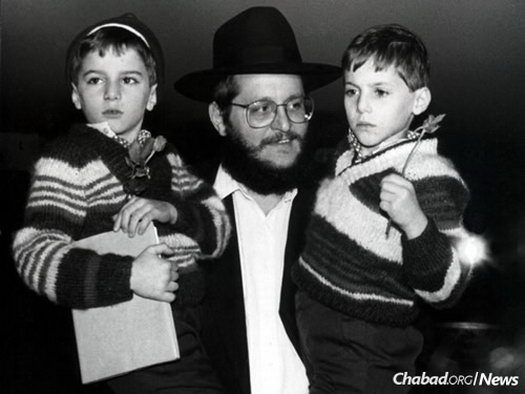
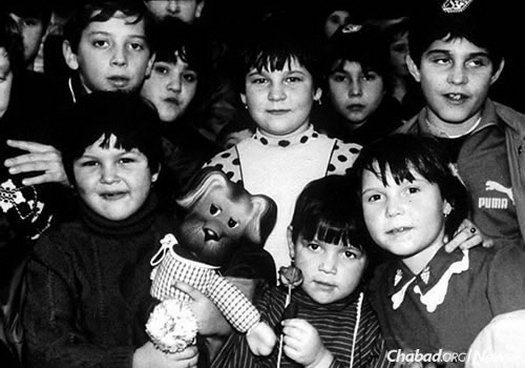
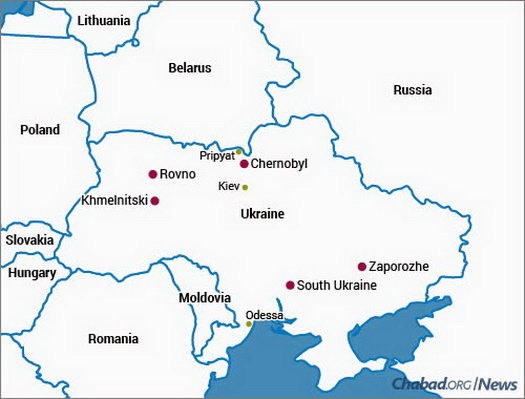
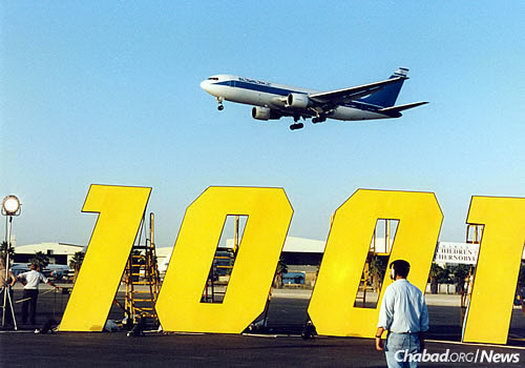
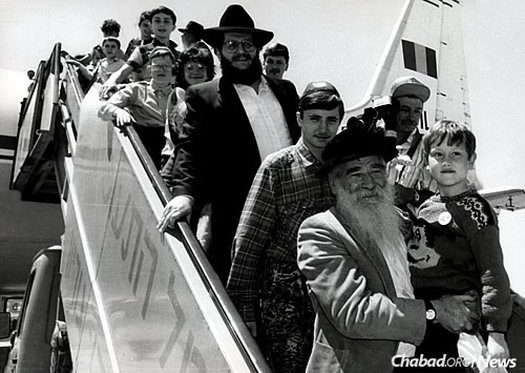
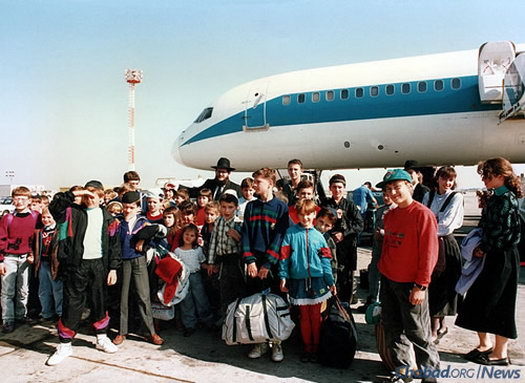
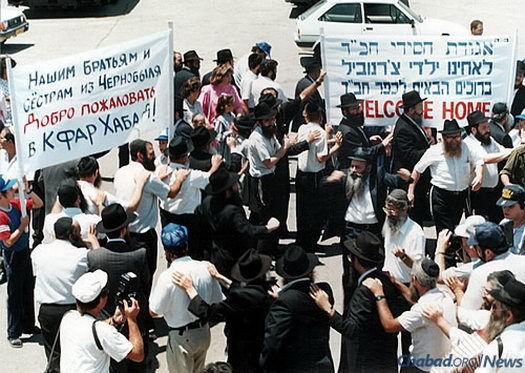
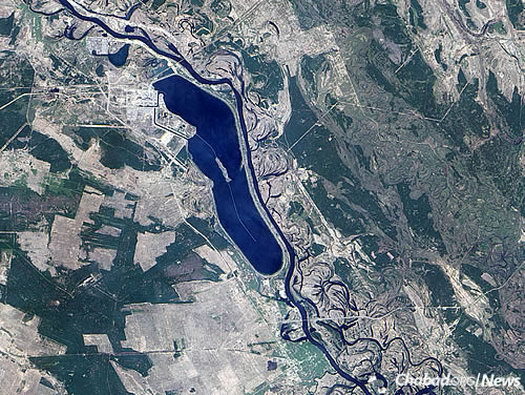

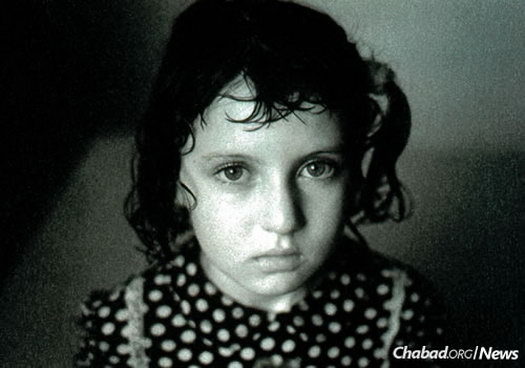
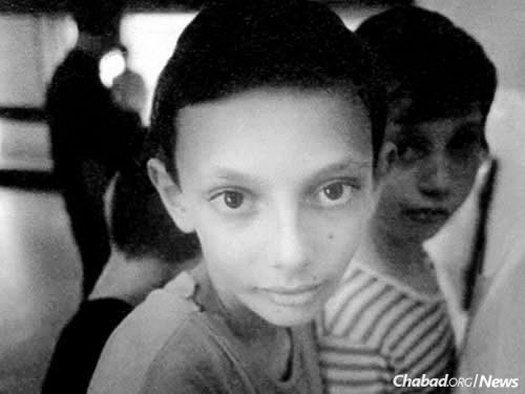
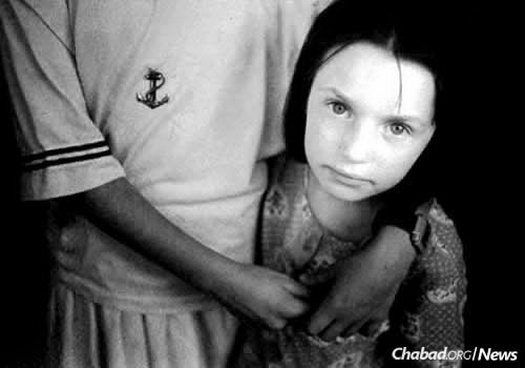
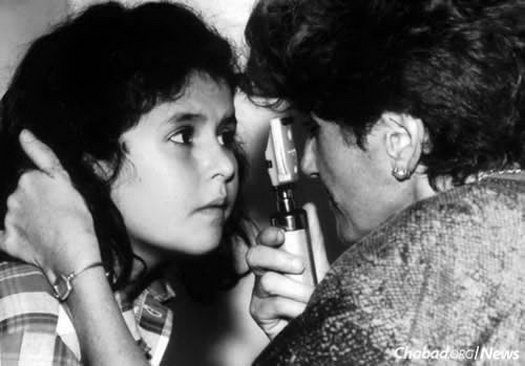
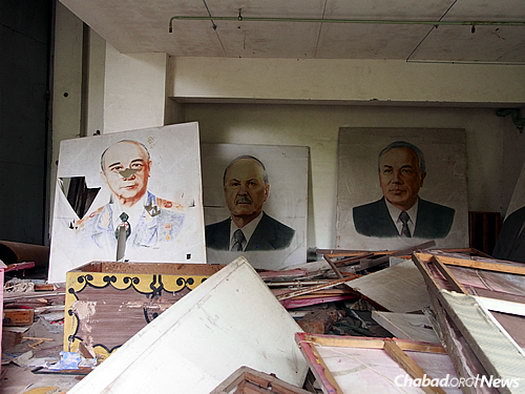

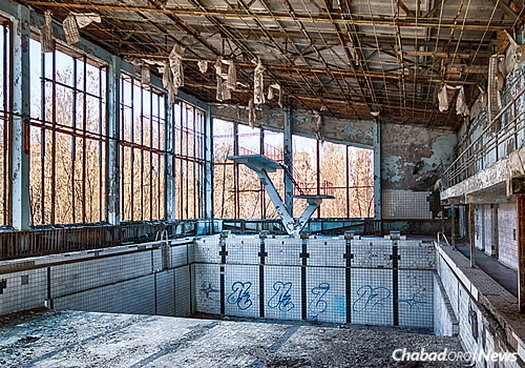

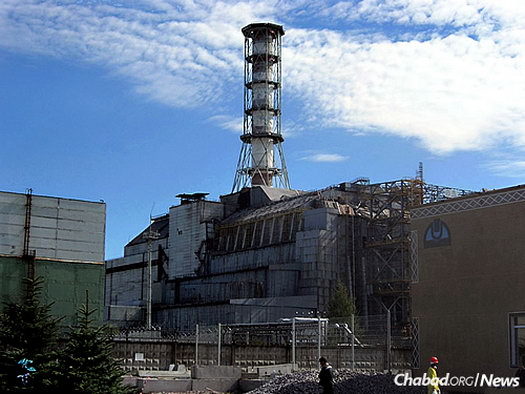













Perl
Baruch Hashem these Yiddishe kinderlach were saved and cured because The Rebbe himself gave a blessing to all of them. All the Rabbis and other Holy Neshamas who helped evacuate the kids and made for them home in Israel should live a long life, have a lot of nachas from their kinder and einiclach!!!
Anonymous
Fascinating article.
yasher koach Rabbi Aronov
You have done so much for the Rebbe and with great mesirus nefesh even at this moment. May you have a true Yud Beis Tammuz Geula